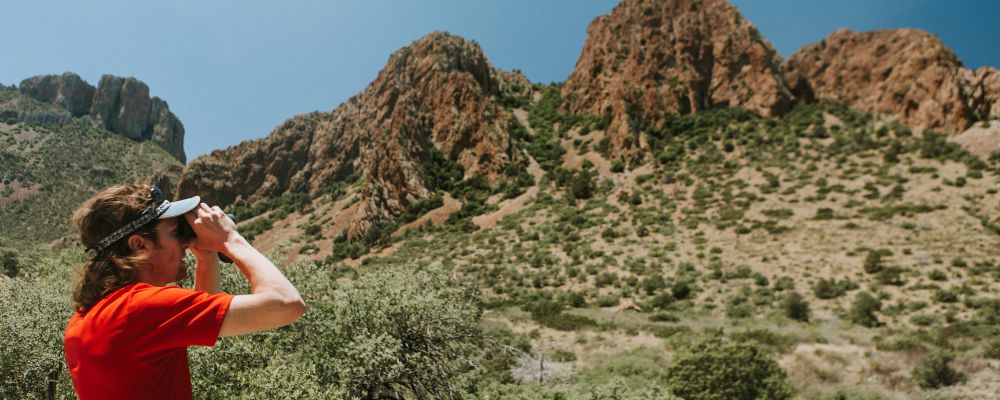
Wildlife in the USA
The vast and varied landscapes of the United States are a playground for nature enthusiasts, offering an extensive array of wildlife experiences. Whether you're captivated by the majesty of bears in Alaska or the vibrant marine life off the Florida Keys, the USA is a treasure trove for those seeking immersive encounters with the country's fascinating fauna. Here's a detailed exploration of three key aspects to consider when embarking on a wildlife-focused journey through the USA.
1. Biodiversity Across Ecosystems
- From Rockies to Wetlands: One of the remarkable aspects of wildlife in the USA is its diverse ecosystems, each supporting a unique set of species. In the Rocky Mountains, witness the iconic grizzly bears and elk in their natural habitat. Explore the expansive wetlands of the Everglades in Florida, where alligators, manatees, and a myriad of bird species thrive.
- National Parks as Natural Havens: America's National Parks are genuine sanctuaries for wildlife. Yellowstone National Park, with its vast landscapes, hosts bison herds and elusive grizzlies. Great Smoky Mountains National Park, a UNESCO World Heritage Site, is a haven for black bears and diverse birdlife. Yosemite's towering cliffs provide a backdrop for encounters with mule deer and bobcats.
2. Coastal Marvels and Aquatic Adventures
- Pacific Wonders: The extensive US coastline offers opportunities for marine wildlife encounters. Along the Pacific Northwest, orcas majestically traverse the waters, while sea lions bask on rocky shores. Explore the vibrant tide pools for a close-up view of intertidal creatures.
- Coral Reefs and Migrating Whales: Venture to the Florida Keys for a rendezvous with vibrant coral reefs teeming with marine life. Migrating whales, including humpbacks and gray whales, make their seasonal journeys along both the Pacific and Atlantic coasts. Coastal regions provide a chance to witness the awe-inspiring spectacle of these marine giants.
3. Birdwatching Paradise and Responsible Tourism
- Avian Diversity: The USA stands as a birdwatcher's paradise, boasting diverse avian populations across its territories. Great Smoky Mountains and Acadia National Park are renowned for their birdlife, including owls, warblers, and majestic eagles. Coastal regions attract migratory birds during their journeys.
- Educational Sanctuaries: Wildlife refuges and sanctuaries across the country offer more than just a glimpse of native species. Places like Merritt Island National Wildlife Refuge in Florida and Bosque del Apache in New Mexico provide educational programs and guided tours. Engaging with these initiatives deepens your understanding of local ecosystems and the challenges faced by their inhabitants.
Things to keep in mind
Stay safe around USA’s wilderness and wildlife by keeping these tips in mind.
- Respect Wildlife Habitat - stay on designated trails to minimise disturbance to natural habitats.
- Maintain Safe Distances - keep a safe distance from wildlife; use binoculars or a zoom lens for a closer look. Be sure to follow park guidelines for specific viewing distances, especially for larger or potentially dangerous animals.
- Do Not Feed the Animals - feeding wildlife disrupts natural behaviours and can be harmful to their health.
- Stay Informed About Wildlife Behaviour - Be aware of mating seasons, migration patterns, and feeding habits to enhance your wildlife-watching experience.
- Practice Responsible Photography- Respect the privacy of wildlife; don't compromise their natural behaviour for a photograph.
- Be Weather Prepared - weather conditions can affect wildlife activity; plan your visit accordingly. Ensure you have appropriate gear for varying conditions to stay comfortable and safe.
- Report Unusual Behavior - if you observe wildlife behaving abnormally or in distress, report it to park authorities. Avoid attempting to handle or rescue wildlife without professional assistance.
Embarking on a wildlife-focused exploration of the United States promises not only breathtaking visuals but also a profound connection with the nation's natural heritage. By delving into the biodiversity across ecosystems, coastal marvels, and the realm of birdwatching, travellers can create unforgettable memories while contributing to the preservation of these wild wonders.
The content of this article is general and provided for information purposes only. Southern Cross Travel Insurance (SCTI) doesn’t guarantee or warrant the accuracy, completeness or currency of any article.
This article may contain hyperlinks to other websites owned or operated by third parties, or references to third party products or services. SCTI isn’t responsible for, and makes no recommendation about, the content or accuracy of any third party website, or for the suitability or performance of any product or service. The inclusion of a link in this article doesn’t imply that SCTI endorses the website or third party product/service.








